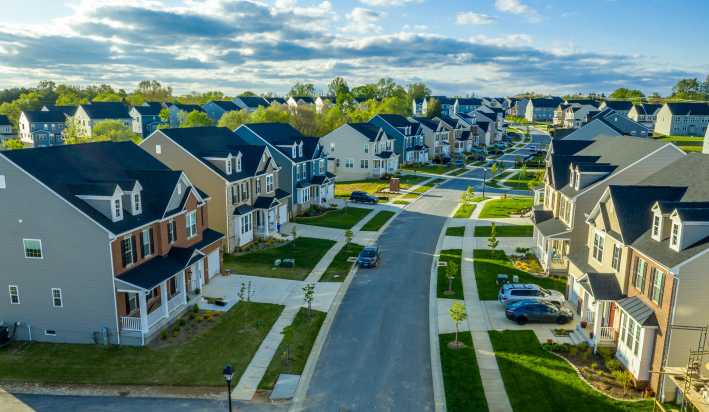
How to Install Vinyl Siding: A Beginner-Friendly Guide
Want to save up to $10,000 on your roofing project? Then learn how to install vinyl siding yourse...

For homeowners who want the very best fiber cement siding, James Hardie has the top-performing fiber cement siding of all time. Sometimes called Hardie board siding, Hardie Plank, Hardie Panel, and other similar names, this siding lasts longer than any other siding on the market. James Hardie is one of the leading fiber cement siding manufacturers in the US. This pioneering company invented this high-grade exterior material over 30 years ago. Today, it continues to be the ultimate choice for homeowners nationwide. Keep reading to learn what is special about Hardie Board siding and why investing in it might be your best home improvement solution. This detailed buying guide covers everything from Hardie Board siding benefits to installation costs and upkeep. Having all the necessary information at hand, you will be able to decide whether this siding material could meet your expectations.
Fiber cement siding is made very much like plaster or mortar by mixing cement, sand, and water. However, fiber cement also has cellulose fibers mixed in, which gives the product its name. These fibers offer higher tensile strength than you would normally have in most siding products, as they are less brittle and prone to cracking.
The ready-made mixture is dyed and pressed into siding boards. Often it is molded to have a textured design, so the final product mimics wood or other materials. James Hardie also uses ColorPlus technology to bake color into its fiber cement siding to make it long-lasting and fade-proof.
Because James Hardie's siding is made of strong ingredients like fibers and cement, it is immune to many of the weaknesses of other siding materials like vinyl and metal. This kind of longevity makes James Hardie siding a favorite among homeowners who want a house siding that looks and works great with little maintenance.

Hardie board siding comes in all the popular types and finishes. Clapboard or Lap siding, cedar shake, board, and batten, all with several different textures from smooth to rough finishes.
Horizontal siding is the most popular style of siding. It refers to the direction in which the siding boards are laid against the exterior so the boards are parallel to the horizon.
Hardie carries two styles of vertical siding - stucco and sierra.
This siding type is made of smaller siding boards of either uniform or varying sizes laid in many different ways. Also known as shake siding, this style gives your home a Cape Cod look and is available with a cedar mill finish.
There are three styles of HardieShingle siding - straight edge panel, staggered edge panel, and scalloped.
The soffit is the underneath area that stretches between the top of the siding to the roofing’s edge. It is an integral part of a siding replacement to protect your home and upgrade its look. There are seven different styles of HardieSoffit panels.
Trim is one of the finishing touches on your new siding. HardieTrim can border not only your trim but the fascia, doors, windows, and columns.
There are three different trim boards, each available in smooth and rustic: 4/4, 5/4, and batten boards. Each of these collections is a part of the James Hardie Statement Collection, available in a range of classic, neutral colors. However, there are hundreds of colors for you to choose from.
Every siding product has pros and cons, but James Hardie's siding clearly has many more pros than it does cons. You're sure to love this outstanding siding with a track record like no other siding product.
See the primary advantages of Hardie Board siding below:
Nevertheless, this siding material has its downsides as well. Check them out to be well-informed before buying:
The national average cost of Hardie Board siding varies from $7 to $13 per square foot. This price includes all materials and installation services. Putting up Hardie Board siding on a 2.000 sq. ft. house costs around $18.000. The cost is notably higher compared to other types of siding since James Hardie is considered a premium quality product among other fiber cement and engineered wood siding options.
Factors like accessibility, location, and job complexity can greatly increase or lower your Hardie board siding installation costs. Moreover, depending on your desired siding board exposure and color, material prices for James Hardie will vary significantly. Also, keep in mind that you need to include the cost of trim, be it wood or PVC / AZEK trim board.
Lastly, siding removal and disposal will add $1.500-2.500 to the total cost, depending on the size of the house and the type of old siding you have.
GET THE ESSENCE OF RELEVANT HOME
IMPROVEMENT TOPICS IN LESS THAN 5 MINUTES

How to Install Vinyl Siding: A Beginner-Friendly Guide
Want to save up to $10,000 on your roofing project? Then learn how to install vinyl siding yourse...

Choosing the model of your new car or the paint color for your new bedroom walls are both crucial...

Thanks for joining our homeowners’ community.
Stay tuned!
Choose the category
Choose the category